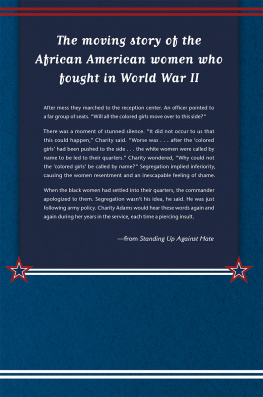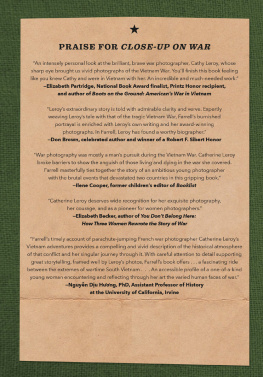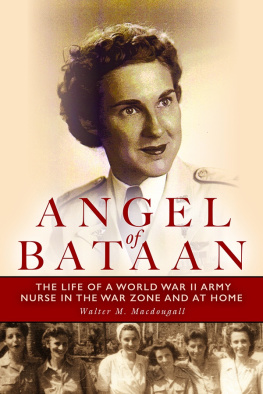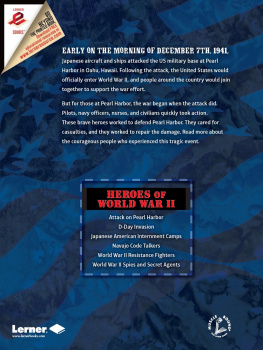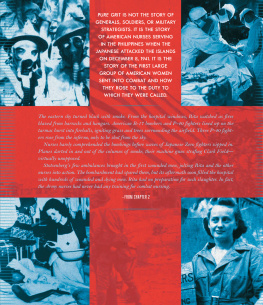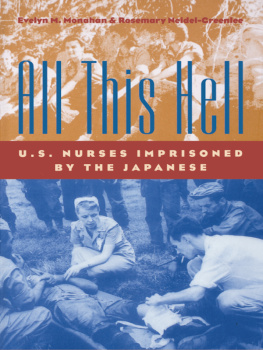
FOR GABE DORAN
AND CHERYL, A WOMAN WITH PURE GRIT
Library of Congress Cataloging-in-Publication Data
Farrell, Mary Cronk.
Pure grit : how American World War II nurses survived battle and prison camp in the Pacific / by Mary Cronk Farrell.
pages cm
Includes bibliographical references and index.
ISBN 978-1-4197-1028-5 (hardcover : alk. paper)
1. NursesUnited StatesHistory20th century. 2. Military nursingUnited StatesHistoryJuvenile literature.
3. World War, 19391945Medical careUnited States. 4. World War, 19391945Prisoners and prisons, Japanese
Juvenile literature. 5. World War, 19391945CampaignsPhilippinesJuvenile literature. 6. Prisoners of war
United StatesJuvenile literature. 7. Prisoners of warPhilippinesJuvenile literature. I. Title.
D807.U6F37 2014
940.54'7573dc23
2013017134
Text copyright 2014 Mary Cronk Farrell
Foreword copyright 2014 Diane Carlson Evans
For image credits, see .
Maps on copyright 2014 Laura Condouris
Book design by Maria T. Middleton
Published in 2014 by Abrams Books for Young Readers, an imprint of ABRAMS. All rights reserved. No portion of this book may be reproduced, stored in a retrieval system, or transmitted in any form or by any means, mechanical, electronic, photocopying, recording, or otherwise, without written permission from the publisher.
Abrams Books for Young Readers are available at special discounts when purchased in quantity for premiums and promotions as well as fundraising or educational use. Special editions can also be created to specification. For details, contact specialsales@abramsbooks.com or the address below.

115 West 18th Street
New York, NY 10011
www.abramsbooks.com
CONTENTS
FOREWORD
WHILE SERVING AS AN ARMY NURSE IN THE RICE paddies and jungles of Vietnam in 1968 and 69, I didnt consider the possibility of becoming a prisoner of war. I was twenty-two years old, and my high school and college education had starkly omitted the stories of the Army and Navy nurses held prisoner during World War II in a camp in the Philippines. Nor did I know that during that war, over five hundred American women died in the line of duty, more than two hundred of them Army and Navy nurses. I remember studying Florence Nightingale, who founded modern nursing during the Crimean War, and learning of Clara Bartons heroic role in the Civil War while founding the American Red Cross. But more recent role models and examples were not offered.
War is hell for men. Weve always known that. As you read this book, you will discover that war is hell for women, too. When World War II broke out, tens of thousands of women seized the opportunity to serve their country in the military. No law has ever been passed for the conscripting, or drafting, of women into the armed forces. Women were not forced into the ordeal of war, yet they wanted to do the right thing and, without regard for personal safety, volunteered for duty. This book wonderfully conveys the contribution of women who faced the heartbreak of war by nursing the wounded and dying. These were daring women, shining beacons for those of us who came after them.
During the Vietnam War, unlike any other war in our history, journalists were given unparalleled access. I knew my parents would be watching the 6:00 news showing body bags or dead or bleeding civilians, helicopters crashing into the jungle, napalm and white phosphorus burning villages, and Vietnamese men, women, and children running from the flames. But what they did not see were the nurses in helmets and flak jackets running to the hospitals and treating the men whose torsos and limbs had been ripped open by high-velocity weapons. They did not hear the sound of mortar thuds and rockets piercing our billets and hospital roofs and walls or see us throwing mattresses on top of patients to protect them from shrapnel. They did not see us hanging blood bags, suctioning tracheotomies, and frantically evacuating patients from the hospital to allow more room for mass casualties. In following the footsteps of all military nurses before us, we did the best we could on the battlefield, sharing the tragedy of the spilled blood of our brother soldiers. Reading the heroic stories in this book of the Army and Navy nurses working in the Philippines brought back painful shared memoriesof my own time on the battlefield and how much we cared, how we moved beyond our own suffering, and how skilled we became in our work to save lives.
The grim realities of womens service in military nursing, with its hardships and perils, have been underrepresented or lost in the annals of history. Too often eclipsed from the public memory of war and hidden behind cameras, behind male images of war, invisible to our nation at large, are the military women. This gap in our knowledge can be filled, but not so easily now that thousands of the veterans have already passed on, their stories buried with them.
With two memorials in Washington, D.C., now honoring military womenthe Vietnam Womens Memorial at the Vietnam Veterans Memorial, and the Women in Military Service to America Memorial, which honors all military women, past, present, and futuretheir service is now honored and their visibility heightened.
Wars have a face, and until now, with our modern integrated military, that face was masculine. War stories favored those men on the front lines or behind the scenes who were directing the war. In any war, however, the distinction between combatants and noncombatants is meaningless, for both groups are rocketed, machine-gunned, bombed, taken prisoner, and killed. Since women by tradition were not supposed to be in those dangerous situations while in service to their country, historians had largely ignored or purified the experience of military women in the Nurse Corps.
You are about to read an unpurified war story of shared sacrifice among ordinary women caught up in the horrors of close-quarters combat, while doing their best to perform their duty of caring for the wounded. With vivid detail, Mary Cronk Farrell puts a feminine face on warfare. I loved reading about these ordinary women who became extraordinary from the stark terror of the ravages of war. These women were not called warriors or soldiers. But in todays definition, they were warriors and soldiers in every sense.
These women have all passed now. We will never fully know their personal agonies of perpetual fear and living under the hateful eyes of the enemy without comforts of any kind. They endured the trauma of watching young men perish and left a lasting impression on all those thousands of souls they touched. They themselves tried to forget the worst of it.
Reading their stories enriched my life, and I hope it will do the same for you. This book comes close to telling it all. It honors these courageous women and memorializes their mercy, kindness, compassion, and strength of spirit. It captures the pure grit of the finest soldier and the best of humanity.
FIRST LIEUTENANT DIANE CARLSON EVANS, RN, CPT, USA
Army Nurse Corps, 1966-1972
Vietnam, 1968-1969
Founder and President, Vietnam Womens Memorial Foundation
INTRODUCTION
THE SEEDS OF THIS STORY LAY DORMANT FOR six months in my in-boxone of those e-mails I never found time to read. How was I to know that a paper my cousin wrote for nursing school would change my life forever?
The paper mentioned seventy-nine American military nurses captured by the Japanese in World War II. Astounding! Why hadnt I learned about these women in school? I started research on the prisoner-of-war (POW) nurses that very day.
Next page

